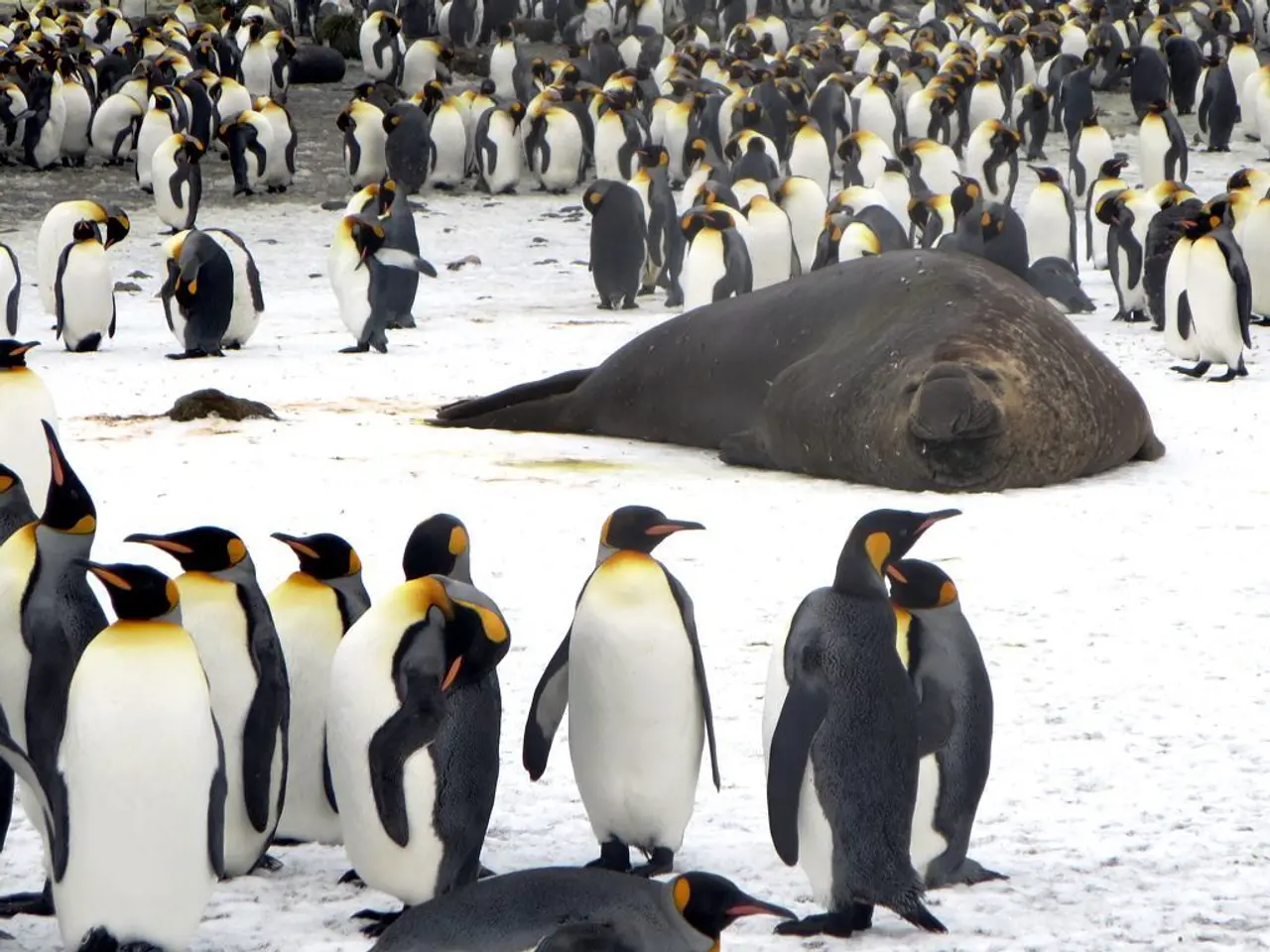Talent Exhibitions in Antarctica Spotlight Leopard Seal's Melodies
In the vast, icy expanse of Eastern Antarctica, a captivating symphony echoes beneath the sea ice. These aren't the melodies of human musicians, but the structured songs of the leopard seals, scientifically known as Hydrurga leptonyx. A new study published in Scientific Reports has revealed that these songs bear striking resemblances to human nursery rhymes.
During the breeding season, leopard seals put on performances that last for hours each day. They spend two minutes on their underwater opera and two minutes catching their breath on the pack ice. These songs are not random but have a unique structure, being both unique and highly structured.
The structure in leopard seal songs helps ensure accurate reception and identification of the singer. Their vocalizations consist of a limited set of notes, including high double trills, medium single trills, low descending trills, low double trills, and a hoot with a low single trill. These calls are arranged in unique sequences, setting apart one leopard seal's song from another.
The study, led by Lucinda Chambers, a PhD candidate at Australia's University of New South Wales, found that the estimated information entropy of leopard seal songs is lower than contemporary, classical, and baroque music. This low entropy, a measure of predictability, is what makes their songs simple and repetitive, much like human nursery rhymes.
The songs of leopard seals may serve a dual purpose, signaling territory to other males and attracting females. The simplicity and predictability of their songs likely help them carry well over long distances beneath the sea ice.
In comparison, more complex human music styles such as Baroque, Romantic classical music, or songs by The Beatles have higher entropy and variability. However, leopard seal songs maintain an almost stylized monotony, designed to optimize communication under the harsh Antarctic conditions.
When compared to vocalizations from other species like humpback whales, bottlenose dolphins, and squirrel monkeys, leopard seals stand out by occupying a "sweet spot" of being neither random nor overly complex. Their songs' structure is less about melodic variation and more about repeating specific high-pitched trills and hoots in consistent patterns.
The next stage of research will mathematically analyze whether leopard seals use their songs to express individual identity, like bottlenose dolphins do with their own unique "signature whistle". Each leopard seal's song is individually distinctive, similar to having its own name.
In conclusion, the structured repetition and predictability of leopard seal songs make them similar to human nursery rhymes. These songs, with their low entropy patterns, balance uniqueness with predictability, optimizing long-distance communication under the Antarctic sea ice.
The complex musical structures that leopard seals exhibit in their songs bear similarities to the simple and repetitive nature of human nursery rhymes, due to their low entropy. As the study led by Lucinda Chambers suggests, the leopard seals' vocalizations consist of a limited set of structured notes, resembling technology-generated digital music in terms of their arrangement and predictability.




